OCR Biology A-level - Cell Division
1/47
There's no tags or description
Looks like no tags are added yet.
Name | Mastery | Learn | Test | Matching | Spaced |
|---|
No study sessions yet.
48 Terms
Interphase
The stage in which normal growth and working take place e.g. producing enzymes or hormones and preparing for division, no active division takes place.

During interphase
DNA replicated + checked. Protein synthesis. Mitochondria grow + divide )in plant and algal cells). Chloroplasts grow + divide. Normal metabolic processes occur
Mitotic phase
The period of cell division
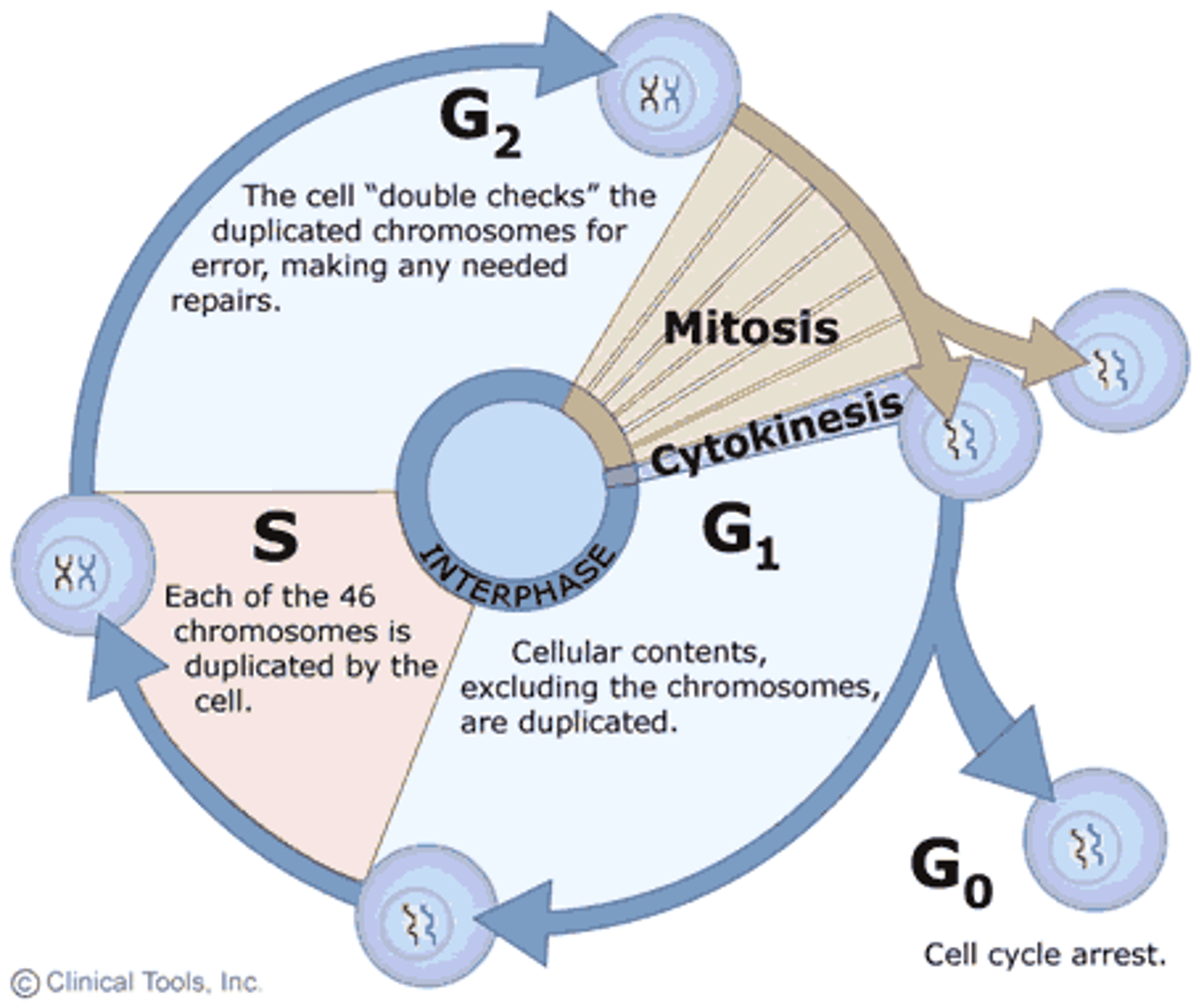
Stages of cell division
1. Mitosis 2. Cytokinesis
Mitosis
The nucleus divides
Cytokinesis
The cytoplasm divides and two cells are produced
Stages of interphase
G1 = 1st growth = proteins are synthesised, organelles replicate = cell increases in size.
S = synthesis = DNA replicates
G2 = 2nd growth = cell grows more, energy stores increase, duplicated DNA is checked for errors
G 0
The phase when the cell leaves the cycle, either temporarily or permanently.
Differentiation
A cell that becomes specialised to carry out a particular function is no longer able to divide. It will carry out the function indefinitely and not enter the cell cycle
Why might a cell leave a cycle (temporarily or permanently)
Differentiation, damaged DNA = cell arrest, get older = more cells
How is the cell cycle controlled?
Checkpoints = monitor and verify whether each stage has been accurately completed before the cell goes in to the next phase.
Checkpoints
Monitor and verify whether each stage has been accurately completed before the cell goes in to the next phase. G1, G2 and metaphase checkpoints
G1 checkpoint
After the G1 phase, before the S phase.
If the requirements are met then the checkpoint triggers the DNA replication, if not it enters resting state
G2 checkpoint
At the end of G2 phase, before the mitotic phase. DNA is checked. If it passes the cell initiates the molecular process that signifies the beginning of mitosis
What does mitosis produce?
The nuclear division, producing two, genetically identical daughter cells = exact copy of the parents DNA and same number of chromosomes.
When is mitosis used?
In multicellular organisms. Growth, replacement and repair of tissue. Also necessary fro asexual reproduction
Chromosomes
Structures of condensed and coiled DNA in the form of chromatin.
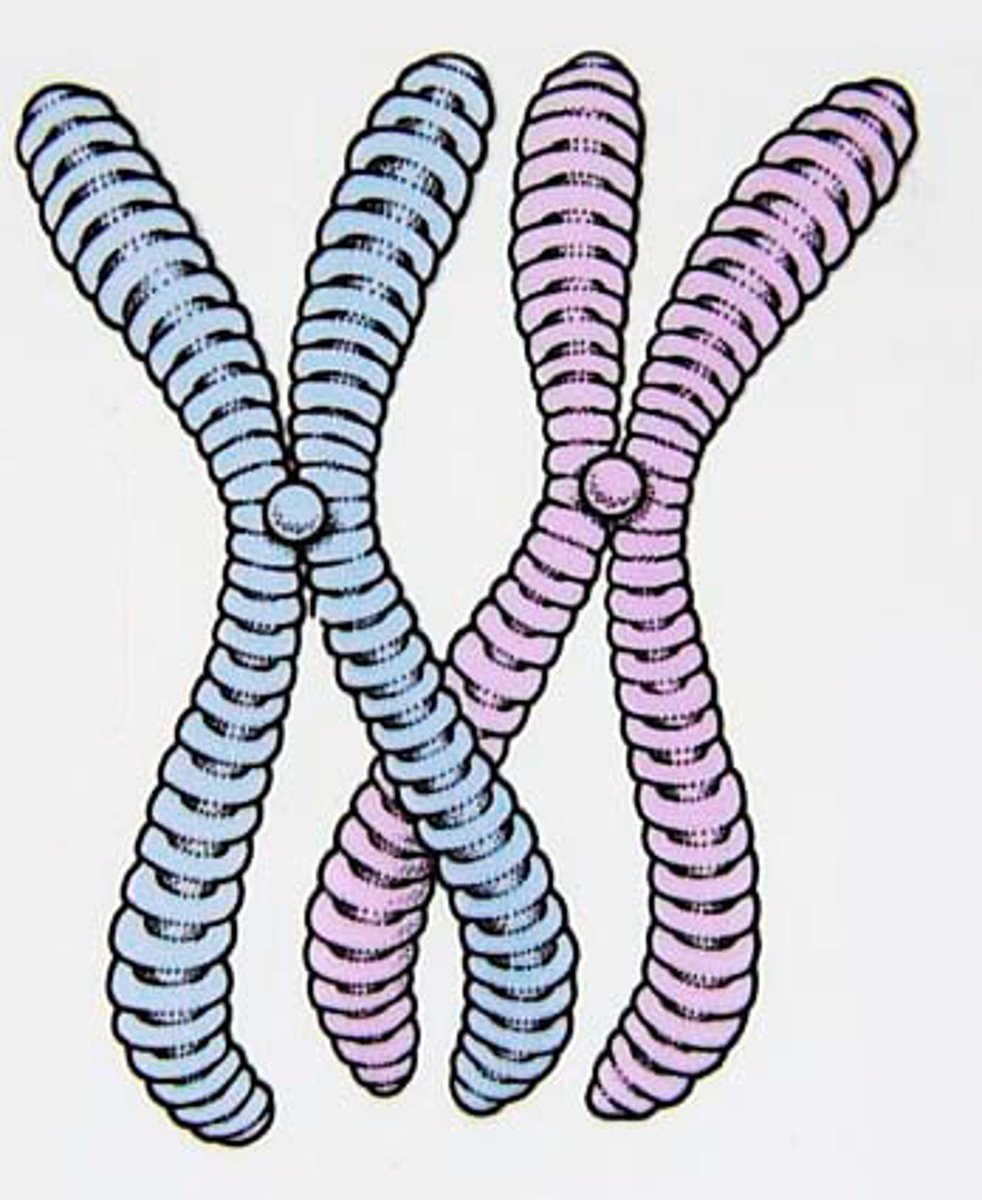
Chromatids
Two identical copies of DNA held together at the centromere
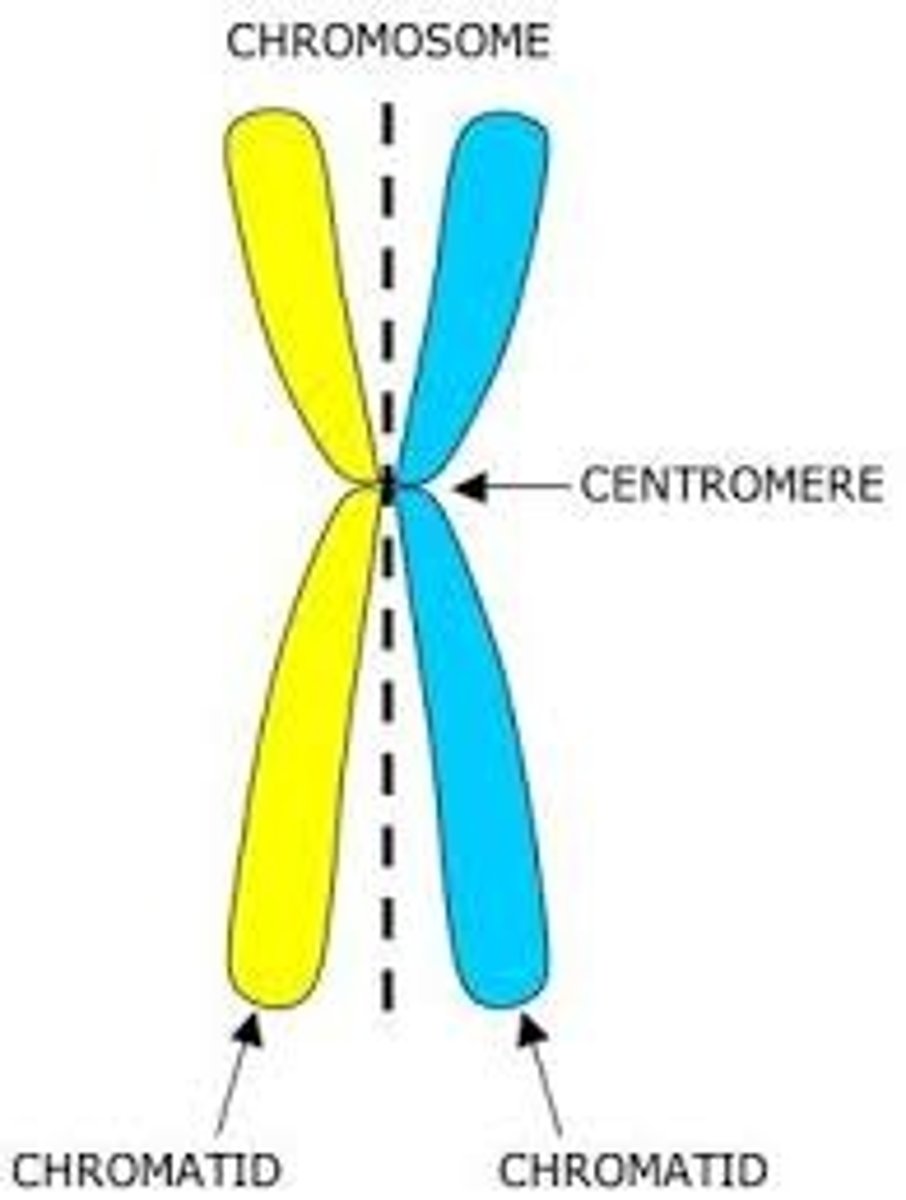
Centromere
A region where two chromatids are held together
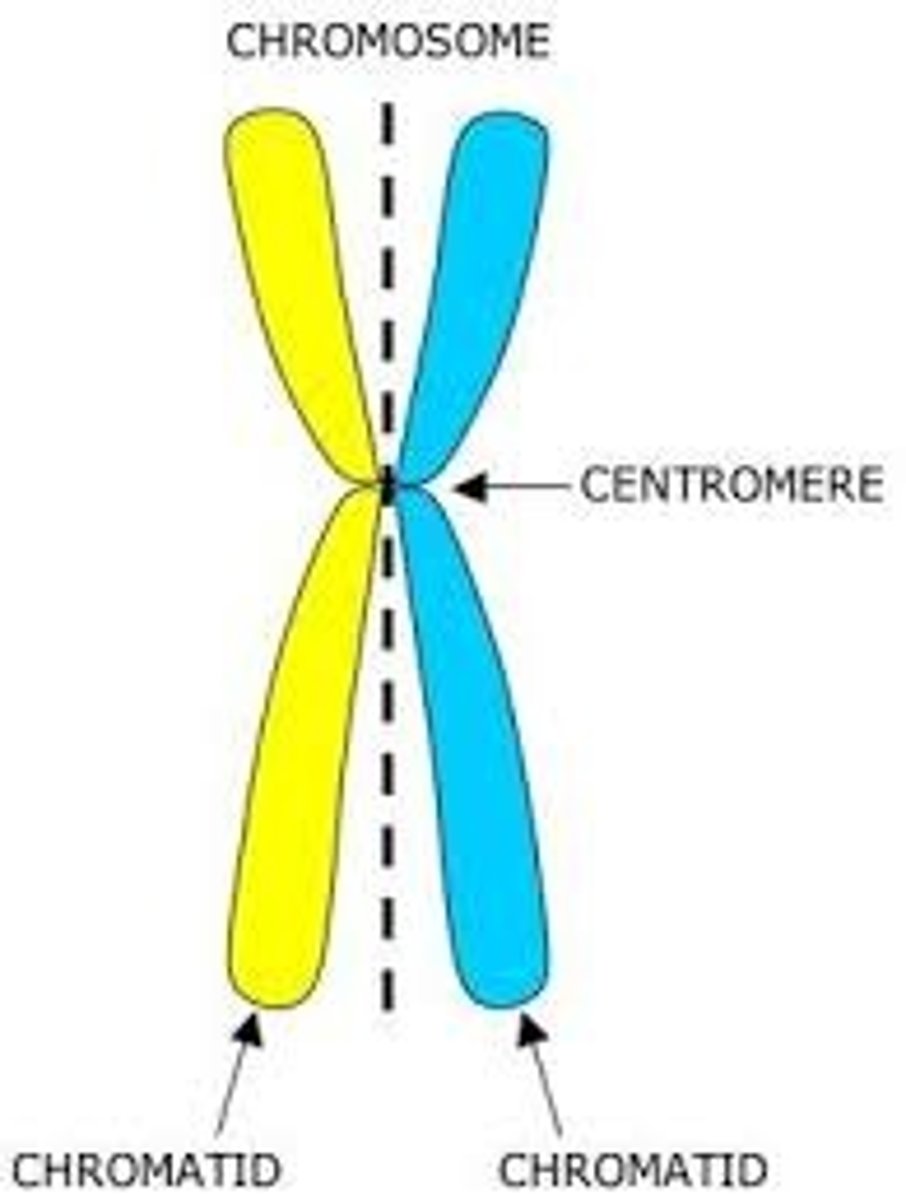
Chromatin
Uncondensed DNA in a complex with histones
Stages of mitosis
Prophase, metaphase, anaphase, telophase
Prophase
Chromatin fibres start to coil and condense --> chromosomes. Nucleolus disappears. Nuclear envelope begins to break down.
Protein microtubules form spindle fibres = link poles = move chromosomes into correct place before division.
Centrioles migrate to poles.
Spindle fibres attach to specific areas on centromeres = start to move the chromosomes to the centre of the cell.
Nuclear envelope has disappeared
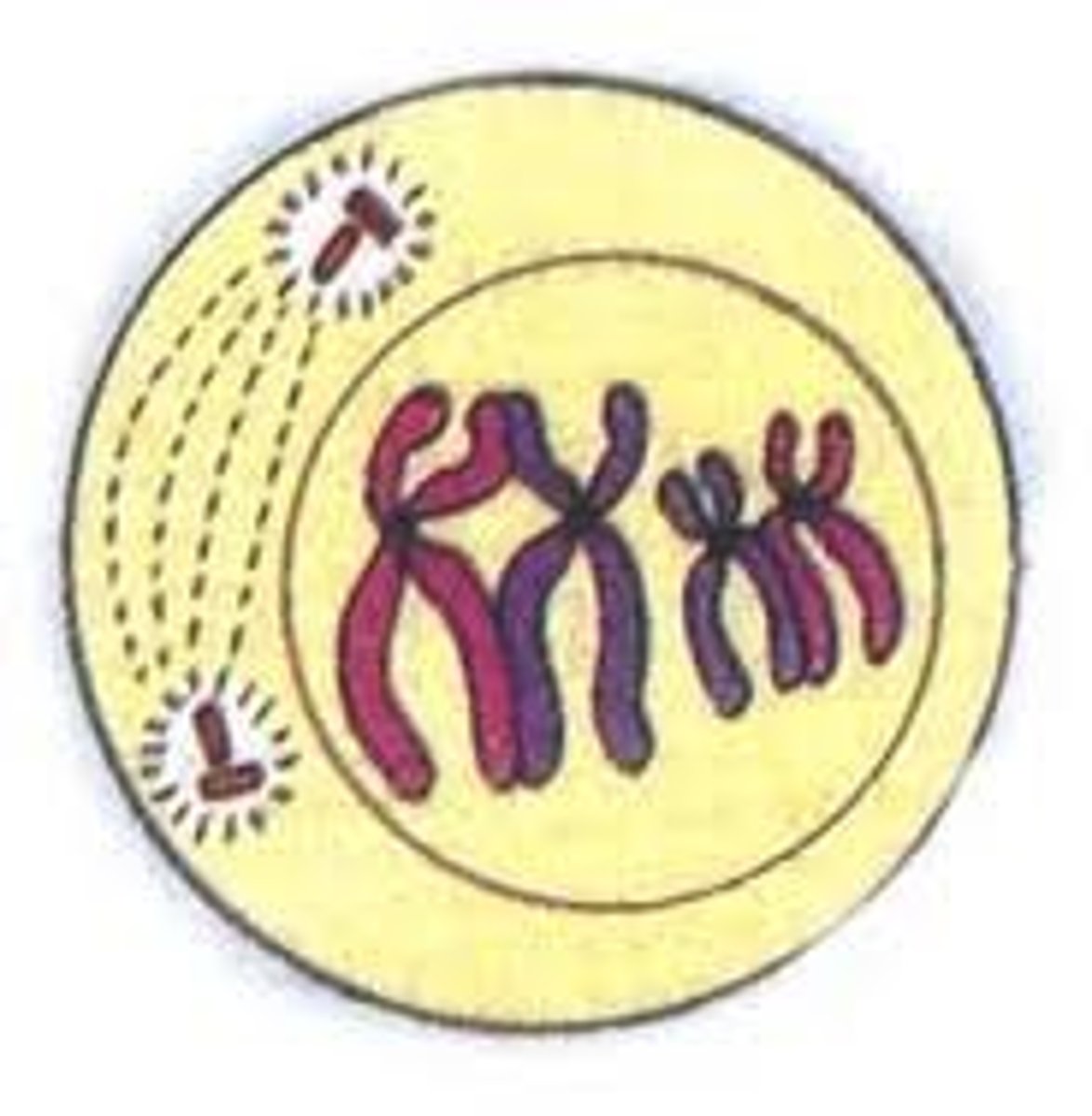
Metaphase
Chromosomes moved by spindle fibres = form plane in centre of cell (metaphase plate)
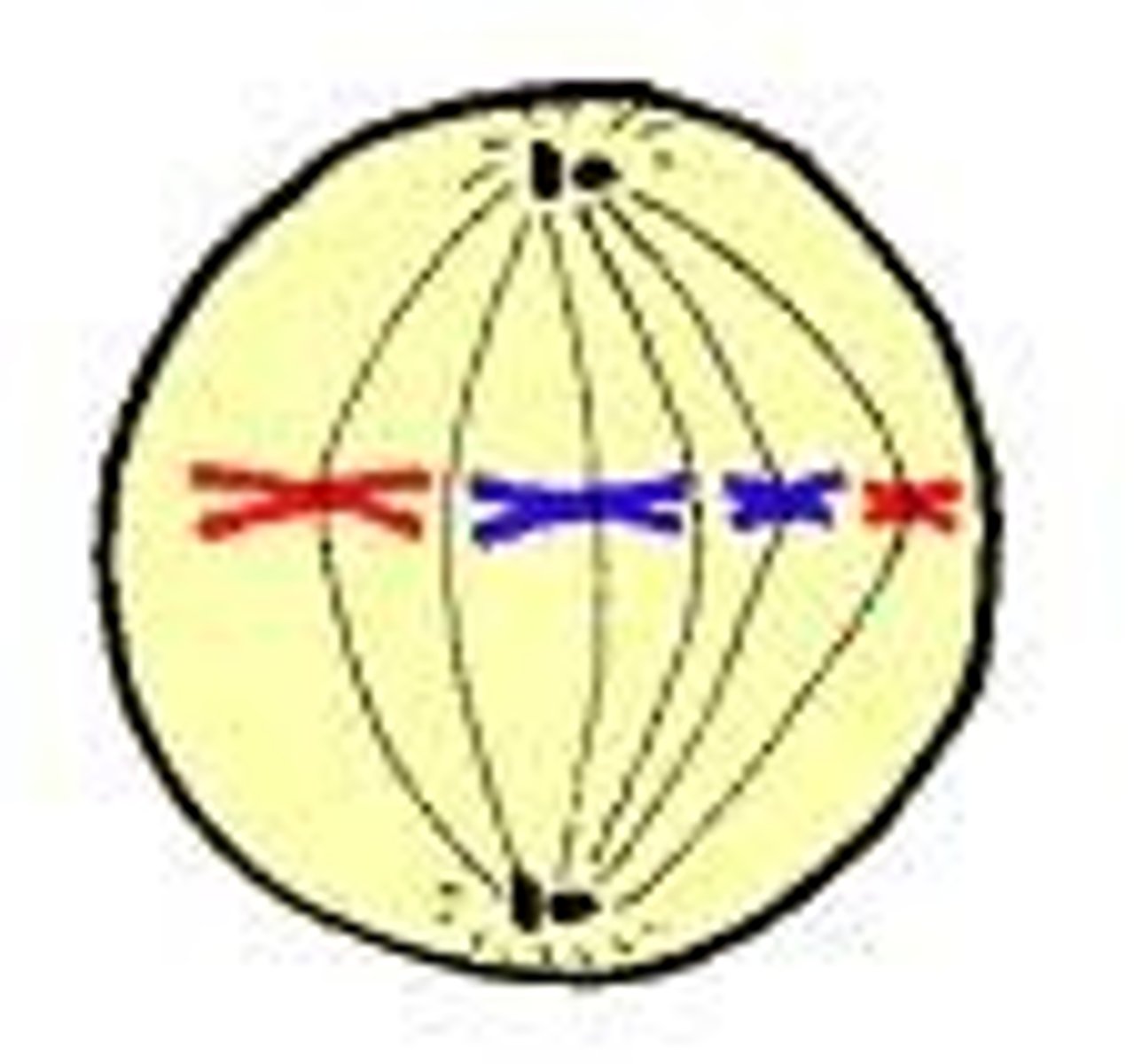
Anaphase
Centromeres in each chromosome divide and are pulled to poles. 'V' shape chromatids.
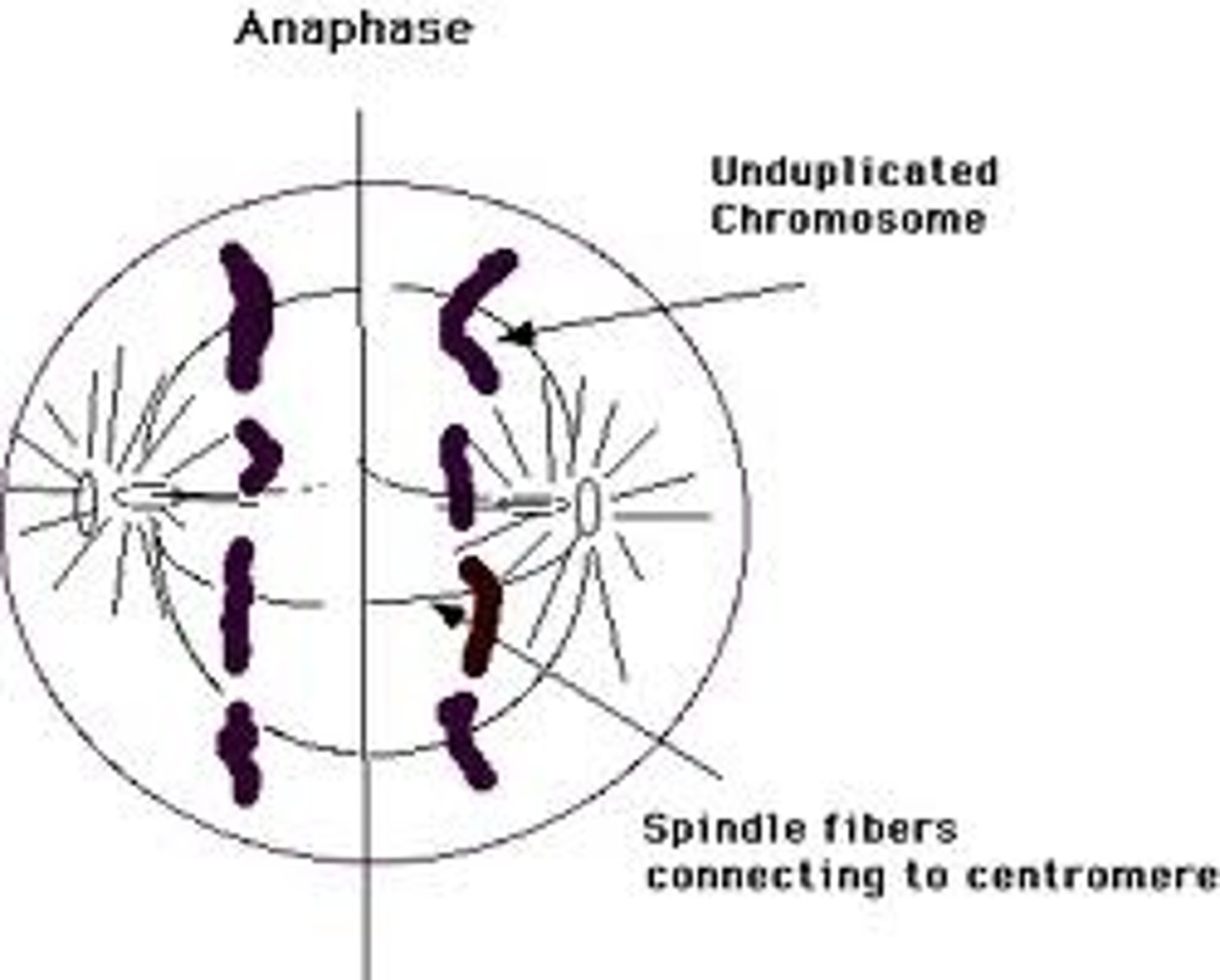
Telophase
Chromatids have reached poles and are now called chromosomes. Nuclear envelope reforms around the groups of chromosomes at each end. Chromosomes start to uncoil and nucleolus is formed. Cell division begins
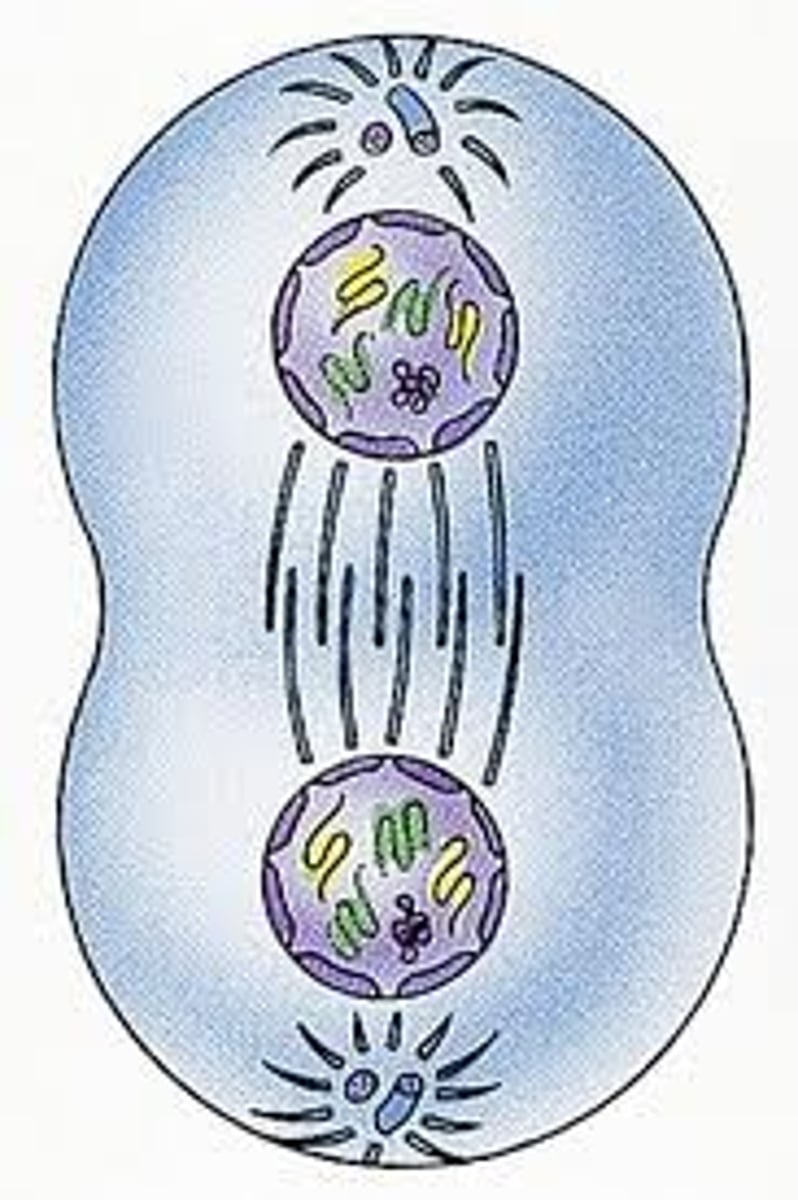
Cytokinesis in animal cells
A cleavage furrow forms in each side of the cell. The membrane is pulled in by the cytoskeleton until it is close enough to fuse = forming 2 cells
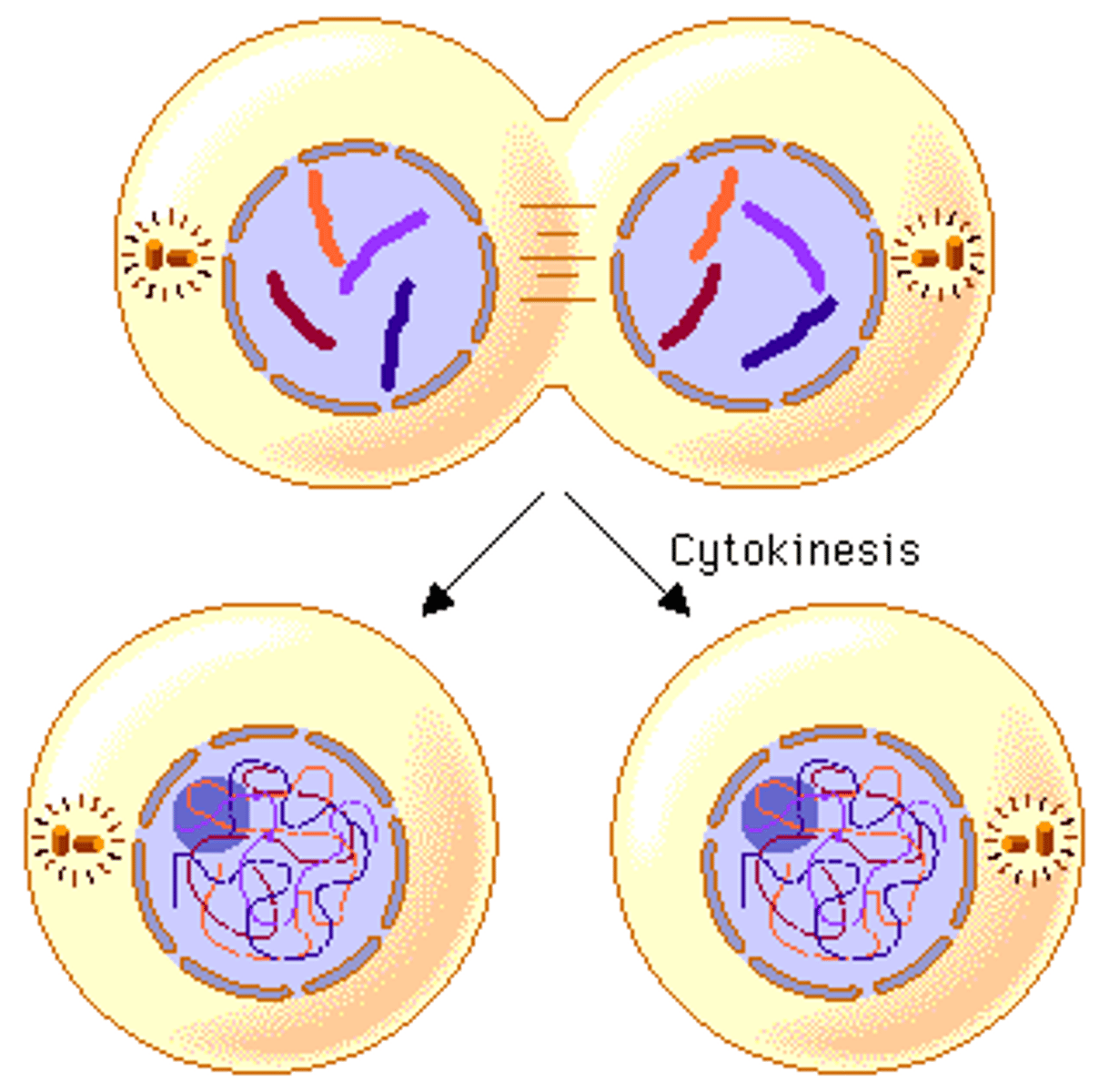
Cytokinesis in plant cells
Vesicles from the Golgi begin to assemble in the same place as the metaphase plate. The vesicles fuse with each other and the membrane, dividing into 2 cells. New sections of cell wall then form and the cell spilts

Meiosis
A form of cell division where the nucleus divides twice, resulting in half the number of chromosomes and producing 4 haploid cells from one diploid cell.
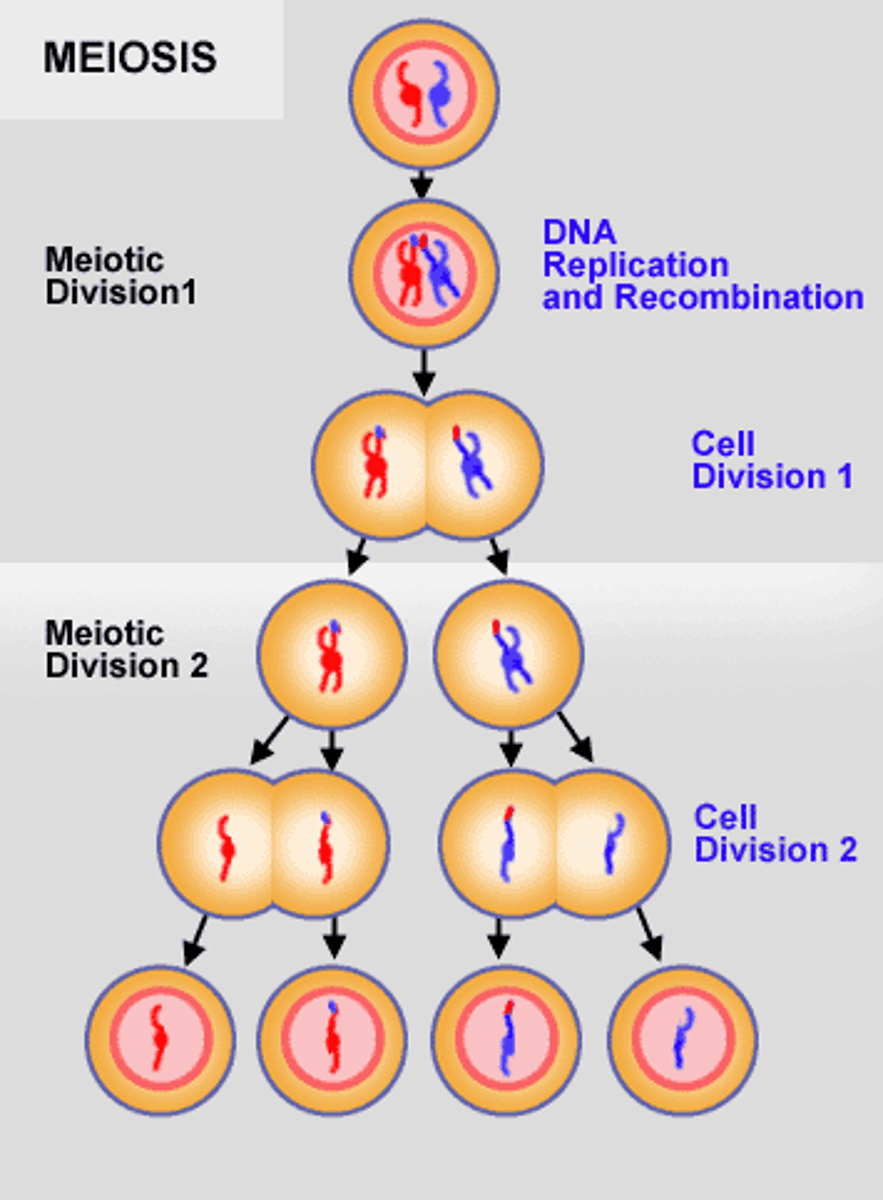
Gametes
Haploid sex cells produced by meiosis in organisms that reproduce sexually
Zygote
The initial diploid cell formed when 2 gametes are joined by the means of sexual reproduction
Haploid
Half the number of normal chromosome number; one chromosome of each type
What is produced during meiosis?
4 daughter cells - the gametes - that contain half the number of chromosomes of the parent
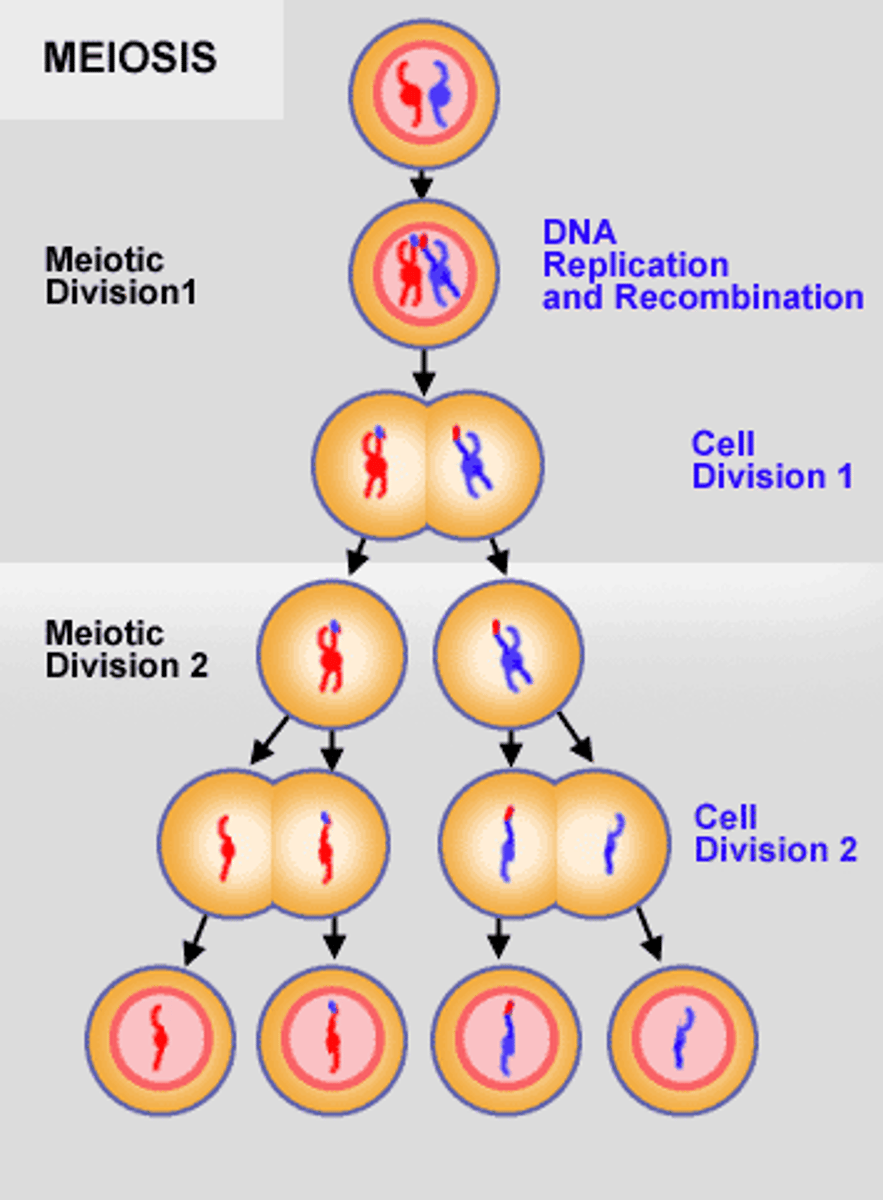
Homologous chromosomes
Matching pair of chromosomes, one from each parent
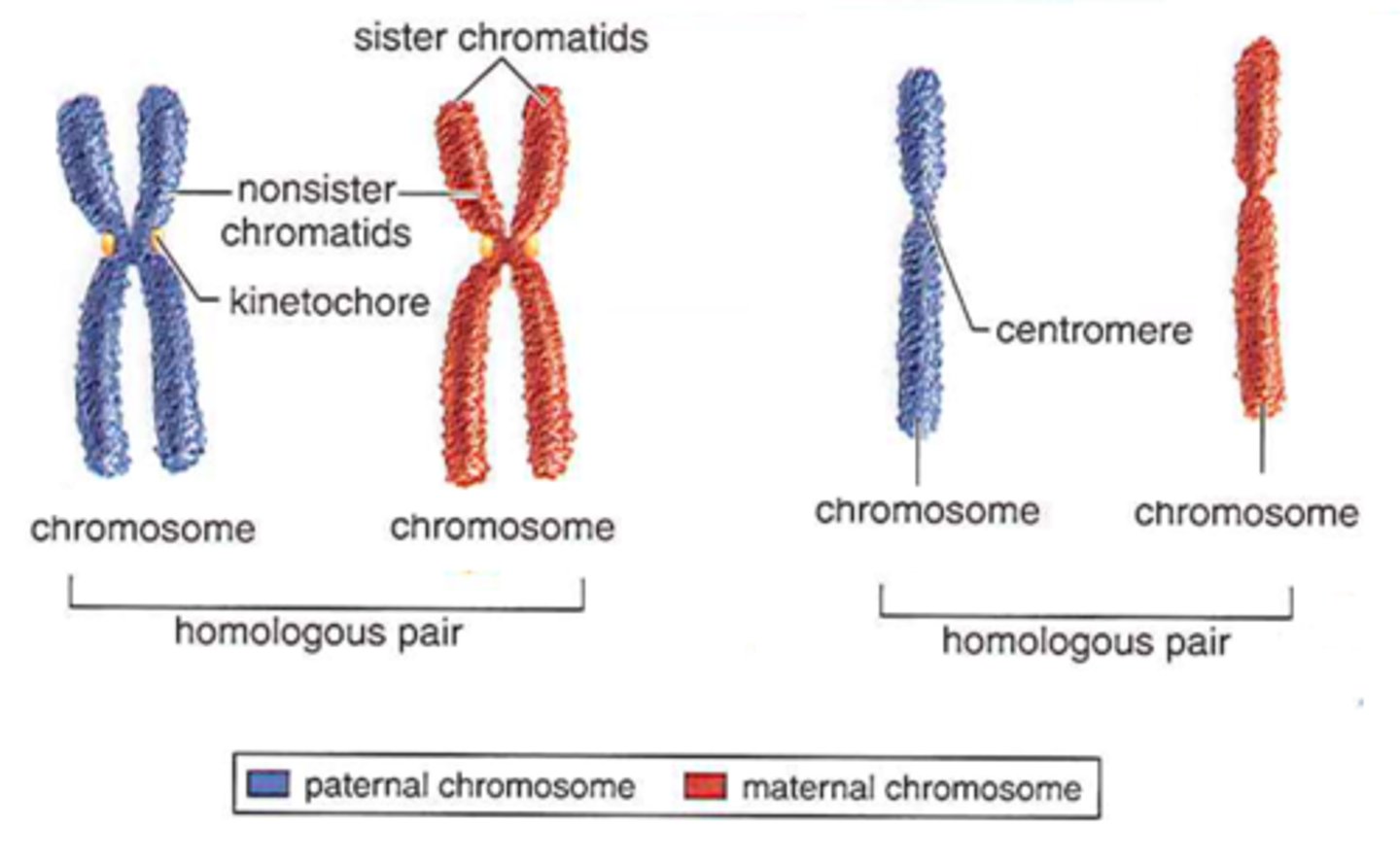
Alleles
Different versions of the same gene
Stages of meiosis
Meiosis 1 = Prophase 1, Metaphase 1, Anaphase 1, Telophase 1
Meiosis 11 = Prophase 11, Metaphase 11, Anaphase 11, Telophase 11
Meiosis 1
The first division, the reduction division. The pairs of homologous chromosomes are separated into 2 cells. Each cell only contain one full set of genes instead of 2 = haploid
Meiosis 11
The second division (similar to mitosis), pairs of chromosomes in each daughter cell are separate, forming 2 more cells. 4 haploid cells are produced in total.
Prophase 1
Chromosomes condense, nuclear envelope disintegrates, nucleolus disappears and spindle formation begins, as in prophase of mitosis.
Difference = homologous chromosomes pair up --> bivalents. Chromatids entangle = crossing over.
Sections of DNA break off and re-join - sometimes resulting in the exchange of DNA. Exchange forms recombinant chromatids, with genes being exchanged between chromatids. Genetic variation occurs from the new combination of alleles = not identical
Metaphase 1
Homologous pairs assemble along the metaphase plate independently and randomly = genetic variation
Anaphase 1
Homologous chromosomes are pulled to opposite poles and chromatids sat joined to each other
Telophase 1
Chromosomes assemble at each pole, nuclear envelope reforms, chromosomes uncoil.
Cell undergoes cytokinesis and divides in two = haploid.
Prophase 11
The chromosomes, which still consist of two chromatids, condense and become visible again. Nuclear envelope breaks down and spindles formation begins.
Metaphase 11
Individual chromosomes assemble on the metaphase plate.
Due to crossing over, the chromatids are not identical, there is independent assortment and more genetic variation is produced.
Anaphase 11
Results in the chromatids of the individual chromosomes being pulled to opposite poles after division of the centromere
Telophase 11
Chromatids assemble at the poles. The chromosomes uncoil and form chromatin again. Nuclear envelope reforms and the nucleolus becomes visible.
Cytokinesis results in the division of cells forming 4 daughter cells. Cells are haploid because of the reduction division. They will be genetically different from each other and the parent cell due to crossing over and independent assortment
Genetic variation
A variety of different combinations of alleles in a population.
Crossing over
Sections of DNA which become entangled, breaks and re-joins during prophase 1 of meiosis = genetic variation
Independent assortment
The arrangement of each homologous chromosome pair in metaphase 1 and 2 of meiosis is independent of each other and results in genetic variation